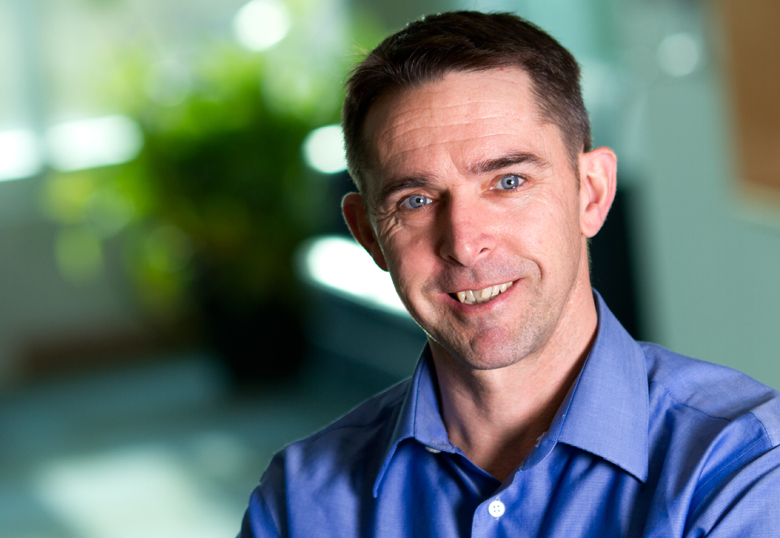In the world of academic research, acronyms are pervasive, condensing the titles of everything from funding agencies to prestigious fellowships. But in the case of University of Lethbridge geography researcher Dr. Christopher Hopkinson, the acronym for his latest project is not only an easy-to-remember abbreviation, but also a symbol of the initiative’s ambitions.

Dr. Christopher Hopkinson is the Unversity's new Chair in Terrestrial Ecosystem Remote Sensing.
“I’m interested in enhancing our understanding of the environment and natural resources,” says Hopkinson.
With such an ecologically minded focus, it’s perhaps not surprising Hopkinson is using his research to pay homage to a Greek goddess best known for protecting the wilderness and natural world. The advanced-resolution terradynamic monitoring system (ARTeMiS for short) is a suite of hardware and software technologies that Hopkinson is integrating to improve simultaneous imaging of the Earth’s surface and what’s happening just beneath it.
A national leader in remote sensing technology and its applications, Hopkinson was named a Chair in Terrestrial Ecosystem Remote Sensing in 2013. He was one of three new Chairs who were added to the University last year as part of the Government of Alberta’s Campus Alberta Innovation Program Chairs plan (a fourth will be announced later in 2014).
Previously an adjunct professor at Acadia, Dalhousie and Wilfrid Laurier Universities, Hopkinson came to the U of L from his most recent post in Canberra, Australia. There, he spent a year as an environmental research scientist at the Commonwealth Scientific and Industrial Research Organisation, the country’s national research agency, combining ground-based, airborne and satellite lidar (remote sensing) data to estimate changes in forest biomass carbon stocks.
Today at the U of L, Hopkinson has received more than $233,000 in funding from the Canada Foundation for Innovation to develop ARTeMiS, an integrated system of field-based sensors that will support 3-D monitoring of seasonal and long-term environmental changes and vegetation processes.
The initiative also involves U of L professors Dr. Hester Jiskoot and Dr. Laura Chasmer. In addition, while three postdoctoral fellows will begin working alongside Hopkinson in the coming months, he envisions that undergraduate and graduate students will contribute to the research in the future, supporting such activities as system integration, field testing, data collection and environmental modeling.
ARTeMiS will map and quantify surface and sub-surface features and rates of change. “The landscape is complicated,” explains Hopkinson. “There are many environmental processes to observe at once – for example, freezing and thawing – and those changes are imperceptible right now because we can’t see below and above the ground surface at the same time.”
ARTeMiS, meanwhile, will enable concurrent 3D imaging of the surface and sub-surface. And the resulting data will eventually help researchers to better grasp the intricate connections among environmental changes, such as forest growth, snowpack evolution, wetland regeneration, and climate change, natural resource management, human disturbance and land reclamation in boreal, alpine, montane and floodplain ecosystems.
“Without this new technology, it will be very difficult to get a handle on these changes and just how important they are,” says Hopkinson.
